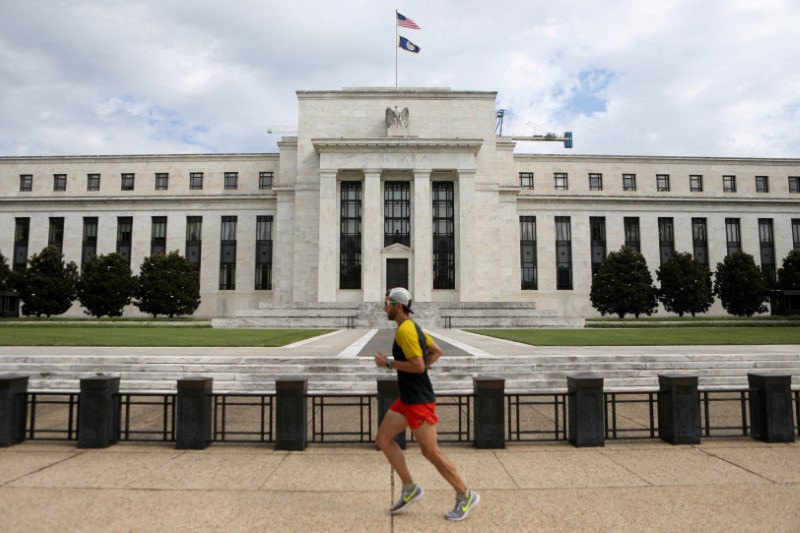Explainer-Charting the Fed’s economic data flow

(Reuters) -The Federal Reserve held its benchmark overnight interest rate steady in the 5.25%-5.50% range at the conclusion of its July 30-31 policy meeting, but also signaled that rate cuts may begin as soon as the U.S. central bank’s meeting on Sept. 17-18.
The decision will hinge on data between now and then.
Among the key statistics the U.S. central bank is watching:
INFLATION (CPI released Aug. 14; PCE released July 26; next PCE release Aug. 30):
July’s Consumer Price Index showed further progress on inflation trending lower toward the Fed’s 2% target with the headline annual rate easing to 2.9% – the first sub-3% reading since March 2021. The core rate, excluding food and energy costs, dropped to 3.2%, its lowest since April 2021.
That said, the month-to-month rates accelerated from June – in line with forecasts – with sticky housing costs accounting for most of that increase, demonstrating again shelter costs’ persistence as an irritant for the Fed.
Still, “with the disinflation elsewhere, the Fed has the greenlight to cut interest rates by 25 (basis points) at its September meeting,” Oxford Economics Chief U.S. Economist Ryan Sweet wrote.
Coupled with July’s Producer Price Index figures, economists predict another constructive set of numbers emerging from the Personal Consumption Expenditures price index used by the Fed to set its 2% target when that data is released at the end of August.
Sweet, for one, estimated monthly PCE would come in at 0.17%. While that would be an uptick from readings for the previous two months, it would bring the three-month average down to about 0.1% – well below where it was earlier this year and a pace that annualizes to well below 2%.
EMPLOYMENT (Released Aug 2; next release Sept. 6):
U.S. firms added an underwhelming 114,000 jobs in July, and revisions to the prior two months knocked 29,000 positions from the previously estimated number of payroll jobs. That pushed the three-month average total payroll growth down to 170,000, below the level typical before the COVID-19 pandemic.
The unemployment rate also rose to 4.3%, which could heighten fears that the labor market is deteriorating and potentially making the economy vulnerable to a recession.
The number of people in a job or looking for work grew. Government data in late July showed the slowing of the labor market is being driven by low hiring, rather than layoffs, with hires dropping to a four-year low in June.
Average hourly wages rose 3.6% in July compared to a year ago, versus a 3.8% annual increase in June. The Fed generally considers wage growth in the range of 3.0%-3.5% as consistent with its 2% inflation target.
JOB OPENINGS (Released July 30; next release Sept. 4):
In a sign of the job market’s continued resilience, the level of job openings remained above 8 million in June, while the number of open jobs available for each unemployed person fell slightly to 1.2, remaining roughly where it was in the years before the pandemic.

Fed Chair Jerome Powell has kept a close eye on the U.S. Labor Department’s Job Openings and Labor Turnover Survey (JOLTS) for information on the imbalance between labor supply and demand, and the pandemic-era jump to more than 2 to 1 in the number of open jobs for each available worker was emblematic of the time.
Things have cooled substantially. Other aspects of the survey, like the quits rate, now down to 2.1, have edged back to pre-pandemic levels in what Fed officials view as an emerging balance between the supply and demand for workers. While the hiring rate has slowed, for example, the layoff rate has remained stable in a sign of companies holding on to workers.





